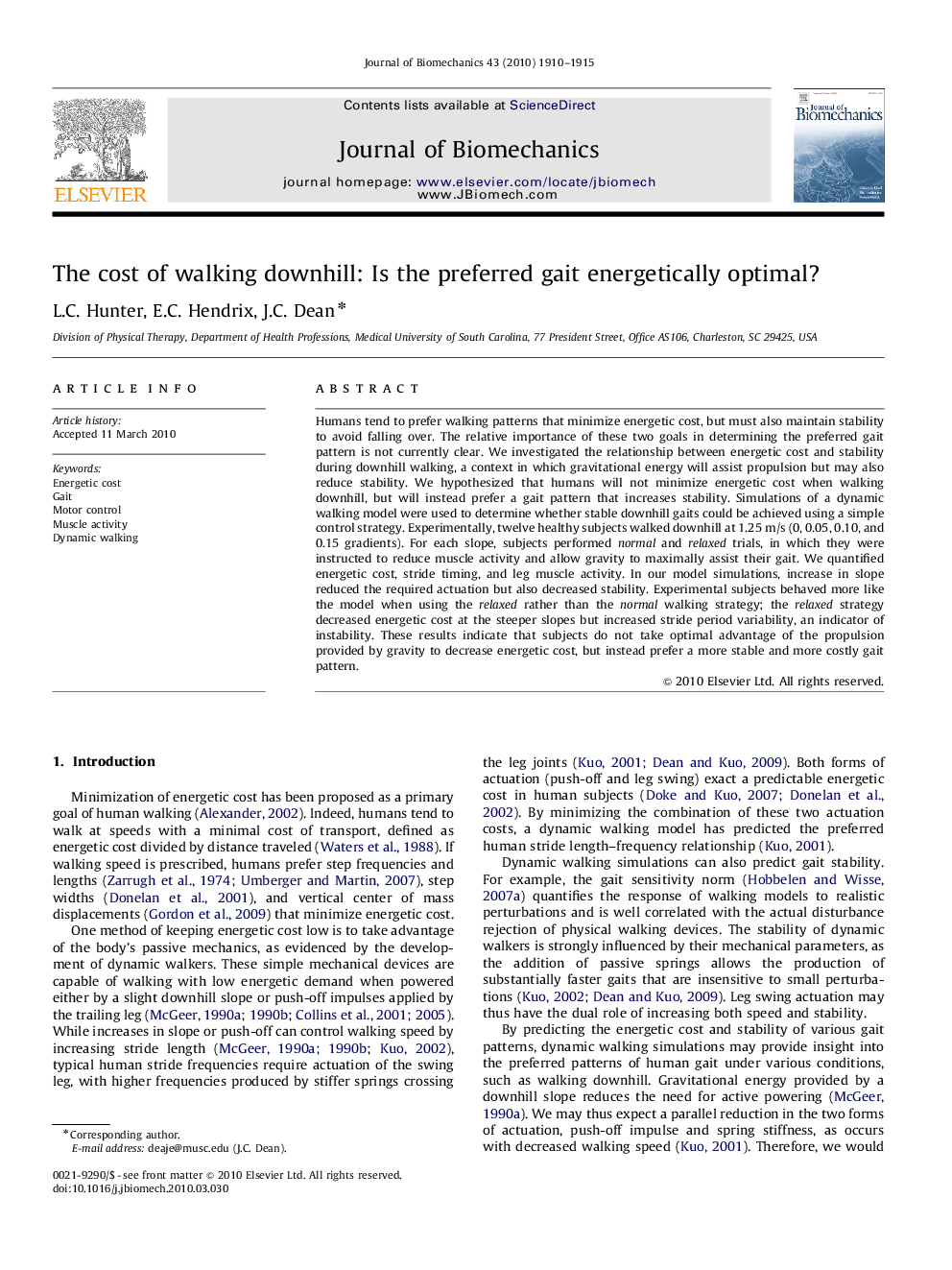| Article ID | Journal | Published Year | Pages | File Type |
|---|---|---|---|---|
| 873323 | Journal of Biomechanics | 2010 | 6 Pages |
Humans tend to prefer walking patterns that minimize energetic cost, but must also maintain stability to avoid falling over. The relative importance of these two goals in determining the preferred gait pattern is not currently clear. We investigated the relationship between energetic cost and stability during downhill walking, a context in which gravitational energy will assist propulsion but may also reduce stability. We hypothesized that humans will not minimize energetic cost when walking downhill, but will instead prefer a gait pattern that increases stability. Simulations of a dynamic walking model were used to determine whether stable downhill gaits could be achieved using a simple control strategy. Experimentally, twelve healthy subjects walked downhill at 1.25 m/s (0, 0.05, 0.10, and 0.15 gradients). For each slope, subjects performed normal and relaxed trials, in which they were instructed to reduce muscle activity and allow gravity to maximally assist their gait. We quantified energetic cost, stride timing, and leg muscle activity. In our model simulations, increase in slope reduced the required actuation but also decreased stability. Experimental subjects behaved more like the model when using the relaxed rather than the normal walking strategy; the relaxed strategy decreased energetic cost at the steeper slopes but increased stride period variability, an indicator of instability. These results indicate that subjects do not take optimal advantage of the propulsion provided by gravity to decrease energetic cost, but instead prefer a more stable and more costly gait pattern.
